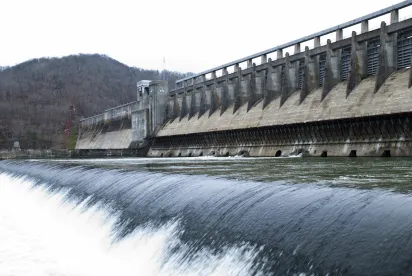On April 23rd, the U.S. Supreme Court issued its decision in County of Maui v. Hawaii Wildlife Foundation, holding that the Clean Water Act regulates a release to groundwater that indirectly pollutes surface water if the release is a “functional equivalent” of a direct discharge. In the near term, the decision creates significant uncertainty for state and federal wastewater permitting agencies and the regulated community alike, as well as creating potential exposure to citizen suits for sources of groundwater contamination that is discharged to surface water.
Historically, pollution released to groundwater has been primarily regulated under state law, while the federal Clean Water Act regulated direct and indirect discharges of pollutants to surface waters including oceans, streams, rivers, and certain wetlands. But the Court’s decision in County of Maui v. Hawaii Wildlife Foundation expands the jurisdiction of the Clean Water Act to include releases of pollutants on land and in groundwater to the extent any pollutant ultimately makes its way into navigable waters. While the Court’s decision analyzed a discharge through wells on Maui, the expansion of jurisdiction under the 50 year-old law creates uncertainty as to whether pollutant spills transported by groundwater to a surface water, previously regulated under state remediation laws, now could be subject to the Clean Water Act. Since that law governs discharges to surface waters, as opposed to the original release, it is possible that spills or discharges occurring years earlier could now be determined to be an ongoing discharge under the new functional equivalent test.
The case centered on discharges from a wastewater treatment facility operated by Maui County that pumped partially treated wastewater several hundred feet underground through a well, where it then flowed to the Pacific Ocean. Concerned parties sued the County under the citizen suit provision of the Clean Water Act for discharging a pollutant to the Pacific Ocean without a permit. While siding with plaintiff Hawaii Wildlife Fund, the Court adopted a somewhat narrower holding than the Ninth Circuit below, ruling that the Clean Water Act regulates pollutant discharges determined to be the “functional equivalent” of a direct discharge into a navigable water. Whether the County of Maui’s underground injection wells meet this new functional test is a question of fact to be determined on remand by the District Court.
Inherently problematic with this new “functional equivalent” standard, however, is how far it extends. While arguably narrower than the standard promoted by plaintiffs, the Court provided only limited guidance regarding the bounds of this expansion of state, tribal, federal, and citizen suit jurisdiction under the Clean Water Act. Instead, the Court identified seven non-exclusive factors for U.S. EPA and courts to consider going forward in determining whether a discharge to groundwater requires a permit, including the time and distance the discharge travels and the nature of the material through which the pollutants pass. The uncertainty created by the opinion was not lost on the Court, which acknowledged that “[t]he difficulty with this approach … is that it does not, on its own, clearly explain how to deal with middle instances.” Not unlike the Court’s 2006 Rapanos decision regarding the scope of jurisdiction over wetlands, implementation will require a case-by-case analysis of whether a permit is required for a discharge of a pollutant to groundwater.
Under the rule articulated by the Court, sources found to be the source of a functional discharge to surface waters may be subject to enforcement actions by U.S. EPA and/or the states, as well as potential citizen suits for ongoing violations.
In the near term, entities involved in remediation of spills with impacts to groundwater contamination will want to confirm (if they have not already done so) whether that groundwater eventually surfaces in a navigable water. More broadly, regulated entities should reassess their disposal of potential pollutants (which could mean anything from treated water to heat) to avoid discharges to groundwater found to be a functional equivalent of a discharge to a surface water, potentially triggering jurisdiction under the Clean Water Act. Depending on that analysis, sources will need to determine whether to seek a permit covering the discharge or if there is a way to cease the discharges or address the off-site migration in order to manage the additional risk under the Clean Water Act. In the longer term, U.S. EPA and states are likely to develop regulations to implement the Maui decision as well as general discharge permit and stakeholders may want to participate in those rulemaking processes.






 />i
/>i

